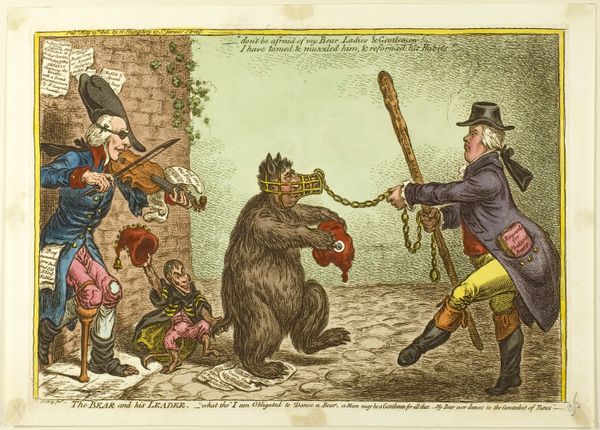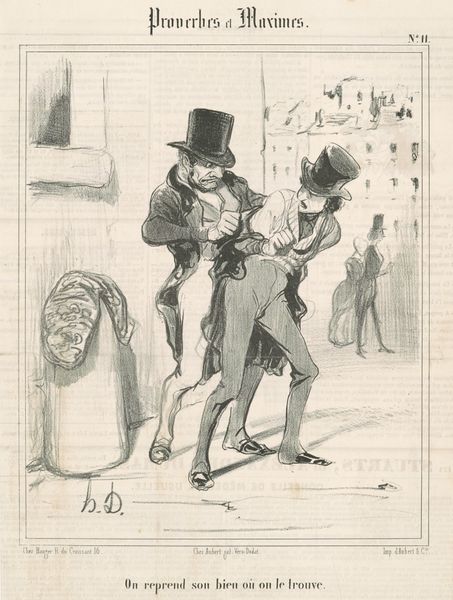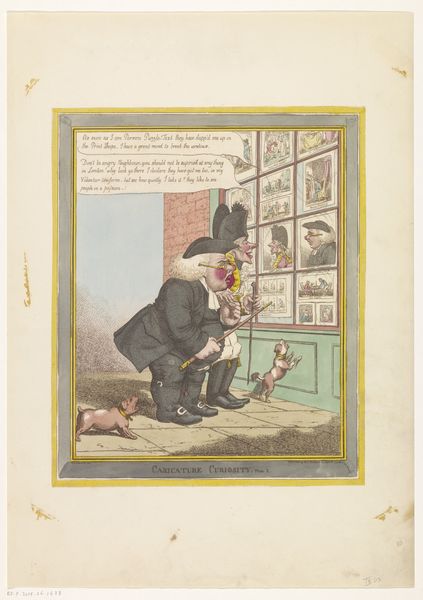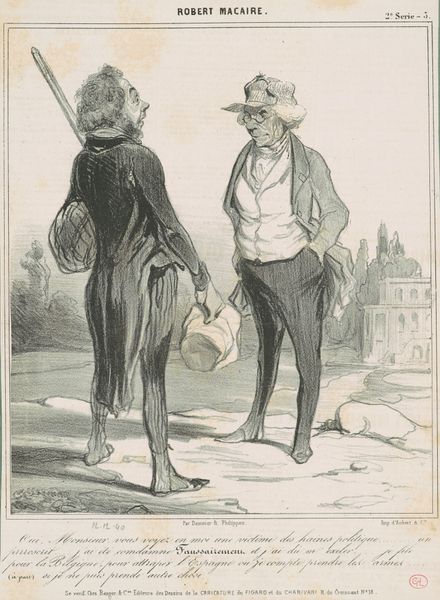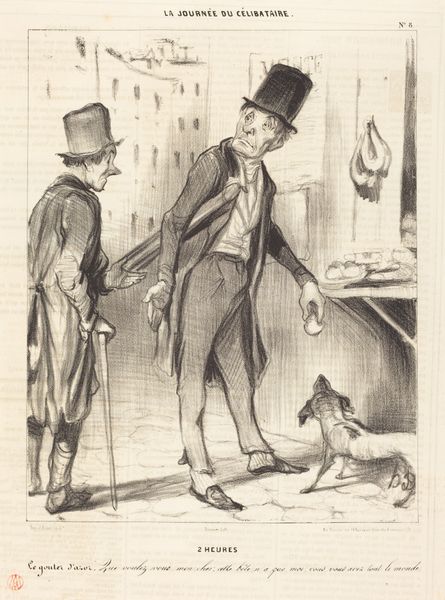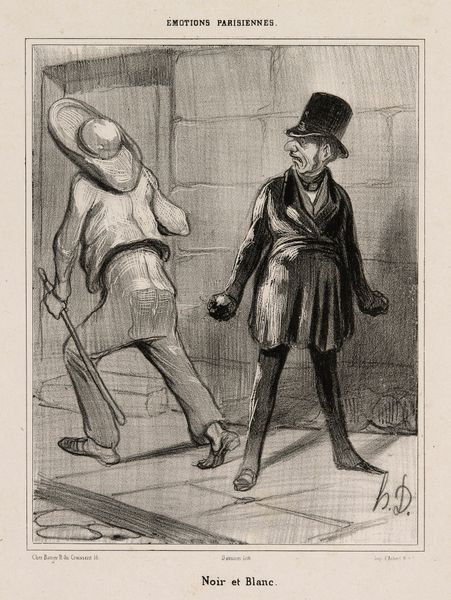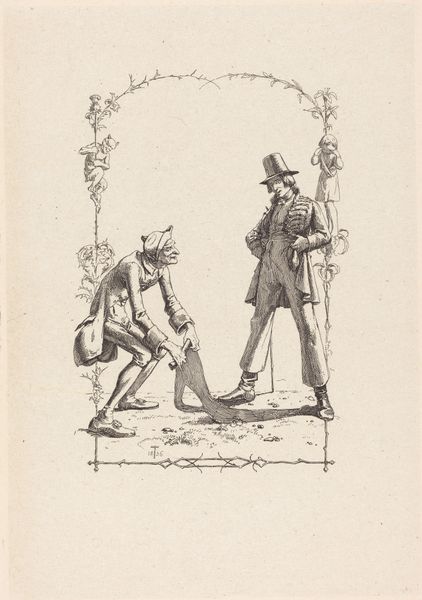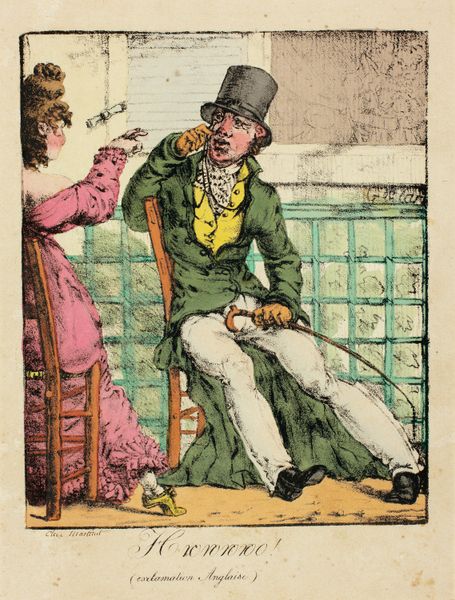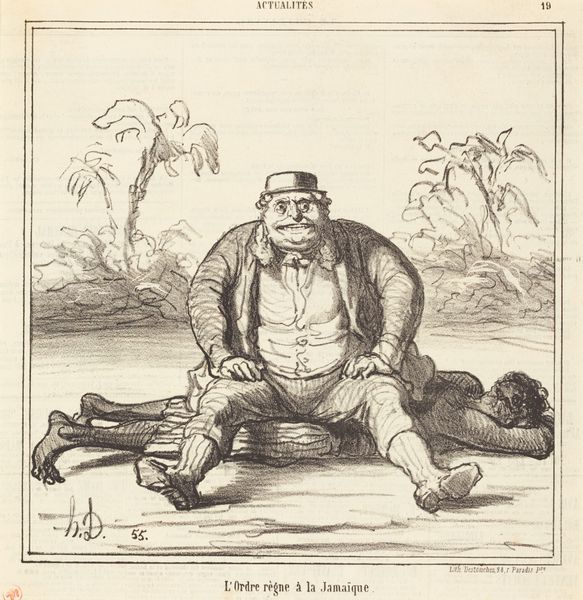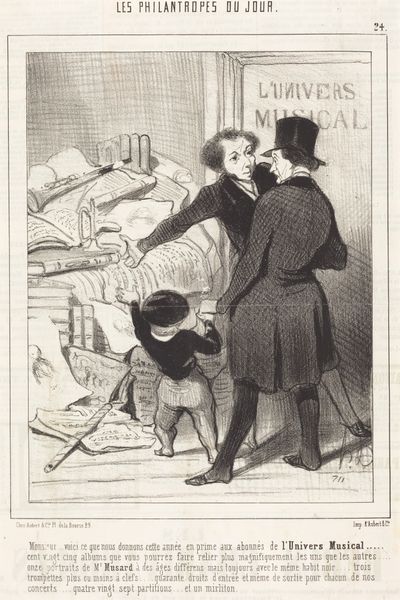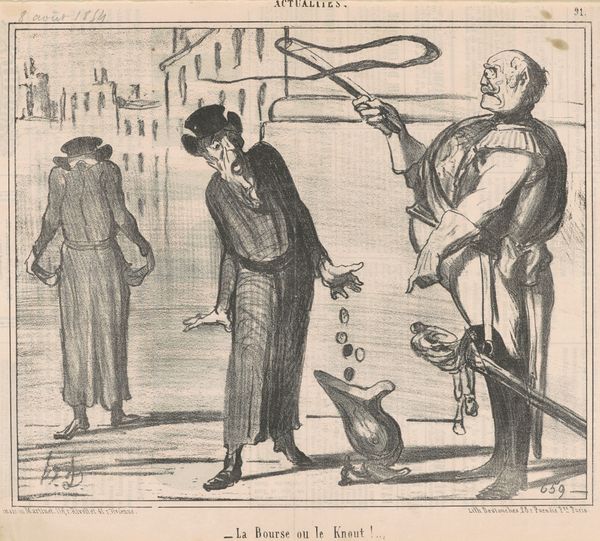
drawing, print, etching, paper
#
drawing
#
narrative-art
# print
#
etching
#
caricature
#
caricature
#
figuration
#
paper
#
romanticism
#
history-painting
Copyright: Public Domain
Curator: Here we have "Something to Look At or The Return of the Embassy", a print etched by J. Johnston in 1817. What are your first impressions? Editor: It's bizarre! My eye is immediately drawn to the… ape-like figure being escorted. The image has an unsettling undertone, mixing social commentary with what seems almost cruel ridicule. Curator: Johnston's etching and print relies on paper, a common medium that allowed for the mass dissemination of these types of images, think political statements made accessible. Its satirical nature speaks directly to production meant to sway public opinion. Editor: Absolutely. The image is brimming with political and social context of its time. This piece surely participates in constructing a specific view toward England's diplomatic relations or perhaps a reflection on "otherness," framed by colonialism. Curator: Note the meticulous lines achieved by etching, each precise mark deliberately placed to craft texture and dimension within the caricature. How might this reflect labour and craftsmanship of print-making at that moment? Editor: Well, look closely at the dialogue coming from the suited figure towards his 'diplomatic' charge—it’s dripping with condescension: "Egad, friend, all very lucky". This etching certainly wasn't passively received but circulated among an already divided populace invested in how such "othered" figures and caricatures were used as propaganda. Curator: Considering paper was the primary material used, alongside the labour-intensive etching, what's your assessment of this print as commodity? Editor: Thinking through the act of 'looking' prescribed by the title, Johnston's caricature doesn't merely offer "something to look at" but mandates an active, critical viewing that is bound with its era's intense political ferment and racial thinking. Curator: Examining the details and material, one could explore the labour invested, and the accessibility afforded by the prints… This blend definitely challenged traditional art consumption, and pushed it closer to the public's domain. Editor: It really exemplifies art acting as both a mirror reflecting contemporary anxieties and a lens shaping perceptions of identity and power. This speaks directly about cultural values of that era, and offers crucial material today when approaching colonialism, orientalism and social hierarchy in Western visual cultures. Curator: Yes, the materiality informs how meaning was not simply created, but dispersed and even weaponized through artistic enterprise. Editor: I agree entirely. Understanding those historical dimensions—and especially considering "what is looked at", by whom, and with what aim is truly at stake within seemingly simple composition here.
Comments
No comments
Be the first to comment and join the conversation on the ultimate creative platform.

